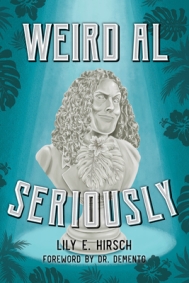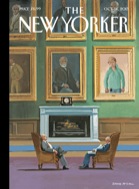 SOUNDTRACK: LYRIC JONES-Tiny Desk (Home) Concert #57 (July 29, 2020).
SOUNDTRACK: LYRIC JONES-Tiny Desk (Home) Concert #57 (July 29, 2020).
 Lyric Jones is a delight. A smart, thoughtful woman who not only raps really well, she has a great singing voice too.
Lyric Jones is a delight. A smart, thoughtful woman who not only raps really well, she has a great singing voice too.
She talks A LOT between songs. She plays 3 songs in 21 minutes. She talks a lot about her hustling–driving for Uber and Lyft as well as all of the running around one has to do to be a musician.
Lyric makes it abundantly clear that her hustle is nonstop – writing, rapping, singing, drumming, engineering, and grinding it out to make Gas Money (the title of her latest album). This quintuple threat, trained in the Berklee College of Music’s City Music program, recorded this Tiny Desk (home) concert from her studio in Los Angeles in May.
“All Mine” opens the song and I love how she plays her electronics while keeping her flow fresh.
My favorite song is “Adulting.” I love watching her create the song a capella–making the beats and the music looping her voice and manipulating it with electronics.
Her multi-layered prowess is present on “Adulting” a song about the evolutionary growth that happens in your late 20s and early 30s. Lyric uses a TC Helicon vocal processor to create percussive beats, looping her voice as a backdrop and packing a punch with vocal harmonies and ad libs.
After the song she jokes about how in the song she is complaining about wanting to stay home all day and not get up and do shit. Be careful what you wish for.
Before the last song she has two important things. First, how you can support Lyric Jones (ha). But she takes the virus seriously, encouraging everyone to be kind to ourselves and patient with ourselves. It’s important to feed ourselves mentally, creatively and to literally feed ourselves.
In grappling with the pandemic, Lyric expresses the deep importance of this moment: “Whatever we put out in this time, in this era is a bookmark in history. Especially as musicians. … For me, my personal testament, I want to be intentional. … My children’s children are gonna know about this time. And I want to know that I impacted it with intentional music, intentional thoughts, insights and perspectives.”
She ends with “Lush Lux Life,” her “affirmation song” about “what I should be doing–living luxuriously.” I really like this song for the excellent retro-sounding music behind the song. I’m really curious if the jam at the end of the song is new or a sample from an interesting rocking jazzy solo. Her producer Nameless has some great skill.
[READ: July 29, 2020] Thinking Inside the Box
A couple of years ago I read Cluetopia, a history of the crossword puzzle written from a British writer. Now here’s a book about crossword puzzles written from an American writer.
Is the country significant? In some ways, very much so. Because Americans and Britons have very different styles of crossword. Americans’ puzzles are full of puns and definitions as well as facts and information. British crosswords are known as cryptics and are mostly full of wordplay–you don’t need external information to solve the puzzles, exactly. Most of the time the clue contains all you need to find the answer (sometimes it even contains the answer itself) but they are quite challenging.
Other than that, the origin of the author is not that significant, because the origins of the crossword are the same regardless where you write from. Arthur Wynne was a Liverpudlian lad who moved to Pittsburgh and then to New York City. He worked on the New York World which was eventually run by Joseph Pulitzer. (It’s ironic that awards of excellence are in his name since he ran the World full of pulpy news and yellow journalism).
In 1913, Wynne was put in charge of the FUN section. He needed to fill space so he came up with a Word-Cross Puzzle. It was shaped like a diamond and the three and four letter answers ran around a center hole. He based it on similar word puzzles he had seen as a child in England. The puzzle became a weekly feature. Eventually a typo changed it to crossword. The puzzles weren’t especially challenging because they were meant to be fun.
Wynne wanted to patent the crossword but the paper wouldn’t pay for the expense. (more…)

 SOUNDTRACK: COREYAH-Tiny Desk (Home) Concert #41 (June 30, 2020).
SOUNDTRACK: COREYAH-Tiny Desk (Home) Concert #41 (June 30, 2020).













